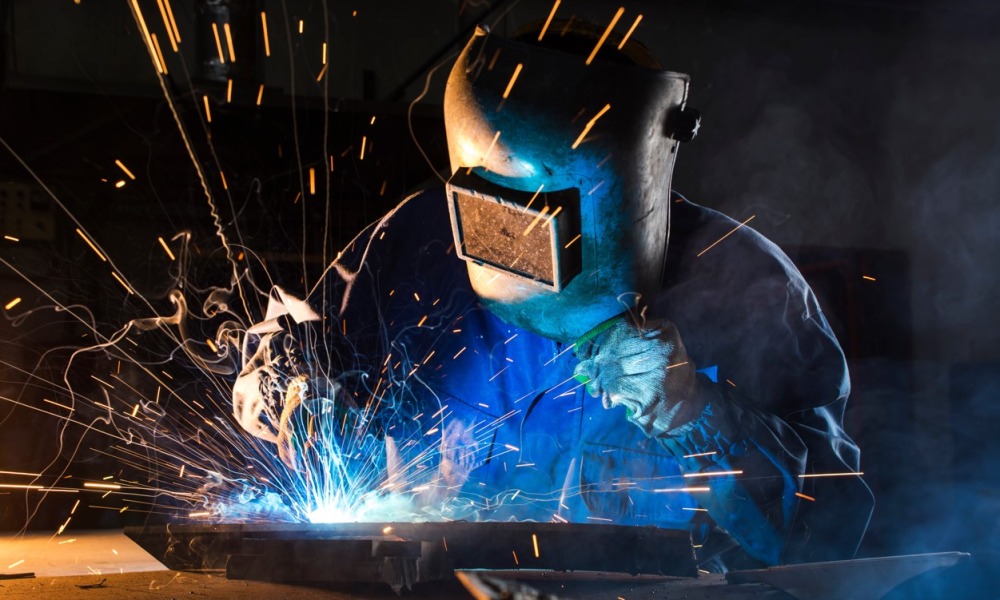Stick welding, which is also known as shielded metal arc welding or SMAW, is one of the most common types of arc welding procedures in use today. Popular because it is a welding technique that is extremely versatile and simple for even inexperienced welders to quickly master, stick welding combines the use of an electric current and an anode within the weld pool to connect different types of metals. As to when it is used and other important facts, here is all you need to know.
What Is Stick Welding?
Stick welding with welders like Kemppi Welding Machines, also known as Shielded Metal Arc Welding (SMAW), is one of the oldest forms of welding. It involves the use of a consumable electrode that is coated with flux and held in a holder connected to an electrical source. The electric current creates an arc between the electrode and the material being welded, which melts both the electrode and the material together to form a strong joint. This process also produces a slag coating on top of the weld, which can be removed with a chipping hammer once it has cooled down.
Advantages of Stick Welding
Stick welding is one of the most versatile types of welding because it can be used on almost any type of metal, including stainless steel, aluminum, cast iron, copper alloys, and more. It’s also easy to use because all you need is an electrical power source and some basic safety gear (helmet, gloves, boots). Plus, stick welders are relatively inexpensive compared to other types of welders, making them great for hobbyists or those just getting started in welding.
Limitations of Stick Welding
Although stick welding offers many advantages, there are also some limitations to consider. The biggest limitation is that it can only be used outdoors due to its reliance on electricity. Additionally, it doesn’t produce very clean welds when compared to other types of processes MIG or TIG welding—so if you require high-precision joints then stick might not be your best option. Finally, stick welding tends to be slower than other processes since each individual pass must be made by hand—which increases labor costs over time if you’re using this process professionally.
Overall, stick welding is still an incredibly useful tool despite its limitations—especially for hobbyists or those just starting out in the world of welding who don’t have access to more expensive equipment. With its versatility and relatively low cost compared to other forms of welding, there’s no denying that a stick remains one of the best ways to join two pieces together! So if you ever find yourself needing something quickly welded together outdoors—stick should definitely be your go-to choice!
Repairs and Production
Since it is such a versatile type of welding procedure, stick welding is used around the world in both production and repair settings. Though it can be an easy welding technique to master and can be used by inexperienced welders, quality issues such as cracking, permeability, and bad fusion can arise if it is done incorrectly. The basic equipment used for stick welding includes a rod holder and earth clamp, so always include these when researching your welding device.
Many Types of Metals
Stick welding is one of the oldest and most common types of welding. With its easy learning curve, it’s a great option for beginners and experienced welders alike. But what type of metal can you weld with a stick welder? Let’s take a look.
Carbon Steel
Carbon steel is the most commonly used material for stick welding, as it is relatively inexpensive and easy to weld. It’s also extremely versatile: carbon steel can be used in applications such as construction, automotive repair, and even artwork. To successfully weld carbon steel, you’ll need an electrode wire that is designed for mild steel or low-alloy steel.
Stainless Steel
Stainless steel can be more difficult to weld than carbon steel due to its high level of corrosion resistance. As a result, it requires special electrodes that are designed specifically for stainless steel. The most common type of stainless steel electrodes is the 308L and 309L, which are designed for use with AC or DC power sources respectively. These electrodes should be used in conjunction with argon-based shielding gas to prevent oxidation during the welding process.
Aluminum
Aluminum can also be stick welded using special aluminum electrodes and argon gas shielding. Aluminum has higher thermal conductivity than other metals, which means it cools down faster during welding; this can lead to cracking if not handled correctly. If you plan on stick welding aluminum make sure you use an electrode specifically designed for aluminum (such as 5356 or 4043) and adjust your amperage accordingly to avoid any potential issues.
When it comes to choosing the right material for your project, there are several things to consider before making a decision—and the same goes for selecting an appropriate electrode when stick welding different metals. Generally speaking, carbon steel is the most common material used in stick welding; however, stainless steel and aluminum can also be successfully welded using specialized electrodes and shielding gases. Make sure you do your research beforehand so that you get the best results possible!
Specialty Uses
Unlike many other types of welding, stick welding is very popular due to its ability to be used for many specialized repair and production procedures. Since the equipment needed for stick welding is easy to transport from location to location, it is used extensively for underwater welding operations, particularly within the military. It is also used in large-scale mining operations and in production facilities that create complex pieces of farm machinery.
An efficient form of welding due to it being easy to learn, its ability to be used inside or outside, and adaptable for use in various industries, stick welding offers many advantages and few disadvantages, guaranteeing it will continue to be widely used for decades to come.

